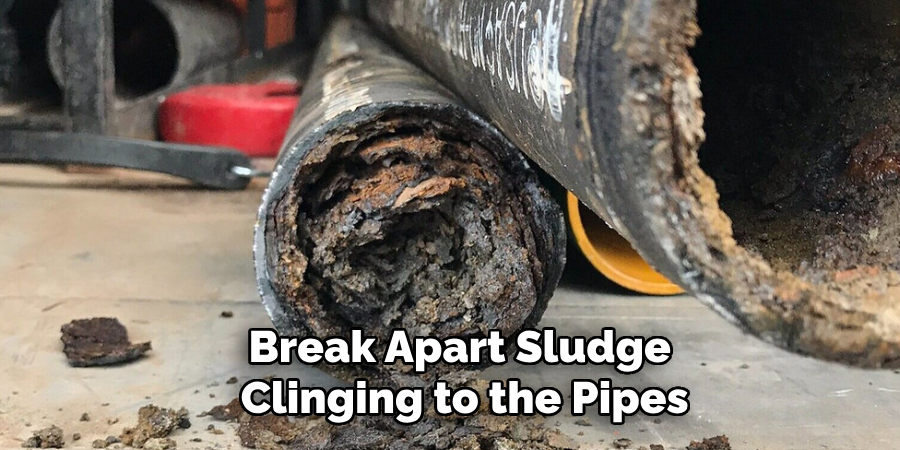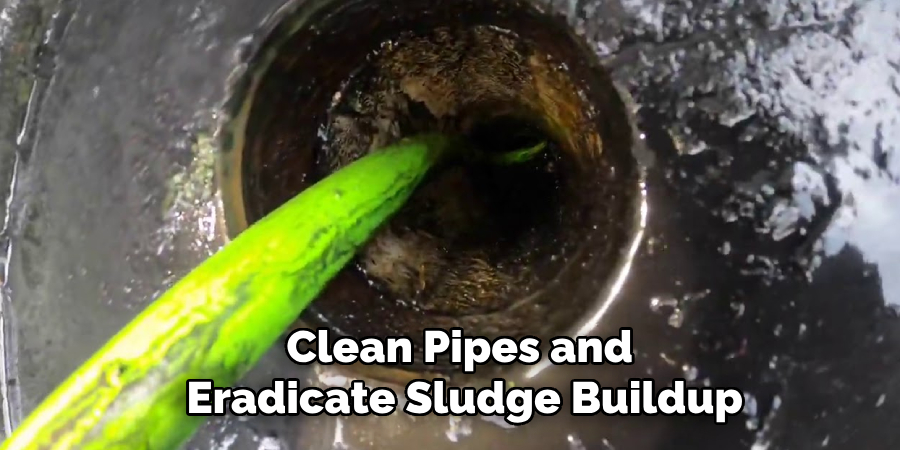Black sludge in a bathroom sink is an unpleasant buildup that can develop over time, consisting of soap scum, hair, toothpaste residue, and bacteria. This murky, dark substance causes unsightly stains and leads to clogged drains and foul odors if left untreated. Understanding how to remove black sludge from bathroom sink is crucial for maintaining a clean and hygienic bathroom environment.

Eliminating this buildup helps prevent plumbing issues and ensures your sink remains odor-free. This article will provide a comprehensive guide to tackling this common problem. We will cover the necessary tools and materials, offer a step-by-step removal process, share prevention tips, and advise when it’s time to call a professional plumber for help. By following these instructions, you can efficiently manage and prevent black sludge, enhancing your bathroom sink’s overall cleanliness and functionality.
Understanding the Causes of Black Sludge in Bathroom Sinks
Soap Scum and Toothpaste Residue
Although essential for daily hygiene, soap and toothpaste can significantly contribute to black sludge formation. When these substances are rinsed down the sink, they mix with water to form a sticky, viscous residue. This residue adheres to the sides of pipes, gradually trapping other debris and organic materials.
Hair and Skin Cells
Bathroom sinks often collect small particles, such as hair and dead skin cells, which are a natural part of grooming. Over time, these elements bind with the sticky soap scum and toothpaste residue, causing the buildup to thicken. This makes the sludge more difficult to dislodge and remove.
Bacteria and Fungal Growth
The combination of damp, organic matter provides the ideal breeding ground for bacteria and fungal growth. As these microorganisms proliferate, they contribute to the formation of black sludge. This results in a visually displeasing sink and leads to foul odors permeating the bathroom environment.
Tools and Materials Needed
Gather the following essential tools and materials to effectively remove black sludge from your bathroom sink. For basic cleaning, you will need gloves to protect your hands, a scrub brush, an old toothbrush for scrubbing, vinegar, and baking soda. These items will help tackle surface grime and loosen sludge. For more intensive drain cleaning, a plunger is useful for dislodging blockages,
while a plumber’s snake or drain auger can reach deeper clogs. Consider using an enzyme-based drain cleaner for stubborn buildup. Additionally, have a flashlight for inspecting the drain’s interior and a drain stopper or trap removal tool for accessing pipes.

How to Remove Black Sludge from Bathroom Sink: Step-By-Step Guide
Step 1: Wear Gloves and Prepare the Area
Before you begin cleaning, it’s important to protect your hands by wearing gloves. Black sludge can harbor bacteria, and gloves can shield your skin from any potentially harsh cleaners you might use. Start by clearing the sink area of any personal items, such as toothbrushes, soap dishes, and other toiletries. This will give you enough space to work and prevent any accidental contamination.
Step 2: Remove and Clean the Sink Stopper
The sink stopper often traps debris that contributes to black sludge. Carefully lift or unscrew the sink stopper according to your sink’s design. Use an old toothbrush to remove debris or buildup on the stopper. Cleaning this component thoroughly not only aids in current sludge removal but also prevents future accumulations.
Step 3: Flush Drain with Boiling Water
Pouring a pot of boiling water down the drain can help loosen and break apart sludge clinging to the pipes. The heat from the water softens soap scum and toothpaste residues, making it easier to clean. Ensure you pour the water gradually to prevent splashing and potential burns.
Step 4: Apply Baking Soda and Vinegar
Baking soda and vinegar are popular natural cleaning solutions that can effectively break down sludge. Pour half a cup of baking soda directly into the drain, followed by one cup of vinegar. Allow the mixture to fizz and react for 10–15 minutes, which helps dissolve organic materials and dislodges clogs. This reaction also deodorizes the drain, leaving it smelling fresh.

Step 5: Use a Plunger to Loosen Sludge
Create suction with a plunger to help dislodge any remaining stubborn sludge in the drain. Ensure the plunger forms a good seal around the sink drain and plunge vigorously several times. This action creates pressure that can break apart and move clogs, further clearing the pipes.
Step 6: Use a Plumber’s Snake or Drain Auger
If the clog persists, carefully insert a plumber’s snake or drain auger into the drain. This tool is designed to reach deeper blockages contributing to black sludge buildup. Rotate the snake to break up the obstruction, and then pull it out. Repeat this process to ensure that any remaining debris is disrupted and removed.
Step 7: Rinse with Hot Water
Finally, flush the drain with hot water to remove any leftover residue and ensure it is fully clean. Running hot water for several minutes helps move dissolved sludge down the pipes and away from the sink. This final step promotes a clean environment and reduces the chance of black sludge returning.
Additional Tips for Persistent Black Sludge
Enzyme-Based Drain Cleaners
Enzyme-based drain cleaners are a safe and effective solution for tackling persistent black sludge. Unlike harsh chemical cleaners, these cleaners use natural enzymes to break down and digest organic matter, such as hair, soap scum, and toothpaste residue. They work over time, gradually eating away at the sludge without damaging your pipes or harming the environment. Enzyme-based cleaners are a great option for maintaining clear drains and preventing future buildups. For best results, follow the product instructions and use regularly.
Manual Cleaning of Drain Pipes
If black sludge continues to build up, consider manually cleaning the drain pipes under the sink, specifically the P-trap. This section of the plumbing often collects debris that leads to clogs. To clean it, place a bucket underneath the P-trap to catch any water, then unscrew it carefully. Remove any sludge or debris inside, and scrub the interior with a bottle brush if necessary. Reassemble the P-trap securely to prevent leaks.
Avoiding Chemical Drain Cleaners
While it may be tempting to use chemical drain cleaners, it’s important to avoid them for persistent black sludge issues. These cleaners can corrode and damage your pipes over time and often fail to completely eliminate the sludge. They also pose health and environmental risks. Instead, opt for safer alternatives like enzyme-based cleaners or manual cleaning methods to effectively address and prevent black sludge.
Preventive Measures to Keep Black Sludge from Returning
Rinse Sink with Hot Water Regularly
Pouring hot water down the drain every week effectively prevents black sludge from developing in your bathroom sink. The heat from the hot water helps dissolve any new buildup of soap scum and other residues, keeping them from hardening inside the pipes.

Use a Drain Cover
Installing a drain cover is another simple yet efficient method to prevent black sludge. Drain covers effectively catch hair and other debris, ensuring larger particles are kept out of the pipes. Reducing foreign objects entering the drain helps minimize the risk of sludge formation.
Avoid Pouring Certain Substances Down the Sink
To further protect against black sludge, be mindful of what goes down your sink. Avoid allowing oil, lotions, or excessive soap residue into the drain, as these substances can contribute to buildup. Instead, dispose of these materials in the trash to maintain a cleaner drain.
Monthly Baking Soda and Vinegar Flush
Regularly flushing your drain with baking soda and vinegar every month can prevent potential clogs and help clear the drain. This natural cleaning solution deodorizes and dissolves organic material, tackling potential problems before they turn into stubborn sludge.
When to Call a Professional Plumber
Call a professional plumber if black sludge quickly reappears, a persistent odor lingers, or the clog is too deep for household tools. These signs indicate that DIY measures might not suffice. Professional plumbers possess specialized tools and techniques, such as hydro-jetting, to thoroughly clean pipes and eradicate sludge buildup. Their expertise ensures complete obstruction removal and minimizes the risk of recurring issues.
By addressing the root of the problem, they provide a long-term solution that enhances drainage efficiency and prevents future complications in your plumbing system.

Conclusion
Maintaining a hygienic, odor-free bathroom requires effectively addressing black sludge buildup. Understanding how to remove black sludge from bathroom sink areas is crucial for cleanliness and plumbing health. Key steps include using natural solutions like baking soda and vinegar, regular hot water rinsing, and employing safety measures such as drain covers to prevent clogs. Consistent upkeep is pivotal, as it reduces risks of recurrent issues and eases long-term bathroom maintenance tasks.
Proper management ensures the sink remains free from unpleasant odors and sludge, contributing to a cleaner, more pleasant bathroom environment.

